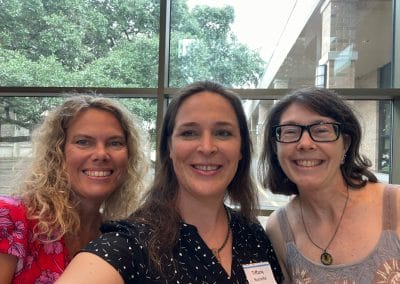
It’s Mental Health Awareness Day, which seems like a good time to write a few posts about being mindful. Research shows that practicing mindfulness can have a positive impact on mental health, including stress and anxiety reduction, emotional regulation, and improved focus and attention. To be honest, when I first started practicing mindfulness, I was skeptical. I’m not a sit and be quiet type of person, so in my mind, being mindful meant throwing on some yoga attire and zoning out for long periods of time without talking or moving (although right now that sounds amazing).
In fact, the first time I tried to do a meditation exercise, I became anxious. Focusing on my breathing felt labored–was I doing it right? And what do I do with all those passing thoughts. I can’t just name them and let them go! What if I don’t remember them? They are important! AAAA! I actually started imagining a dam at the end of a river, so that when I let them float away, I could easily pick them up. Honestly, that helped.
As I did more research and training on mindfulness, I realized that there wasn’t a single way to be present and mindful. Everyone has their own way. When I found out there was such a thing as walking meditation, I nearly jumped with joy! You can move AND be mindful? Yes! And it reminded me that when I run, I’m completely present. I take in the process with all of my senses and am one with the road. I was already practicing mindfulness without recognizing it!
I put a call out on Instagram recently to find out what mindfulness means to my followers. Here are a couple of their thoughts:
@sceritelli: “Crafting that to-do list with an approachable timeline to reach success for each item…stress/anxiety is ongoing, but being able to compartmentalize helps.”
@sledgegram: “A ball player doesn’t start with hitting a home run in a Major League. He has been through many lower leagues. So don’t expect mindfulness to work right away in your most stressful situations. Practice when you are alone (that’s T-Ball, to go back to the analogy) and work your way up (little league, college, minor league/farm team) through increasingly stressful situations. Give yourself time (daily and over the years).”
@annestewartart repeats a quote from Eckhart Tolle daily– “Accept–then act. Whatever the present moment contains, accept it as if you had chosen it. Always work with it, not against it. Make it your friend and ally, not your enemy. This will miraculously transform your whole life.”
@mi_st_yb: “Spend time in nature. She is beautiful, and we don’t notice or appreciate her beauty enough. I enjoy sitting in the garden, taking a few deep breaths. I close my eyes and concentrate on opening my ears, listening to the birds singing, the insects buzzing, the wind’s gentle tune through the trees. Then I open my eyes and whilst taking deep breaths, focus my sight on one thing, be it a flower, insect, bird tree, or the clouds in the sky.”
@carupeka: “I approach mindfulness as a child seeing things for the first time. Just noticing. No judgment–allowing my inner dialog to quiet and see if my body can feel the moment. Making it part of my life makes life peaceful…progress, not perfection.”
So many different ways to cultivate mindfulness. Over the next few posts, I’m going to highlight some ways that parents and educators can include mindfulness in their daily lives and with their children. Stay tuned.








